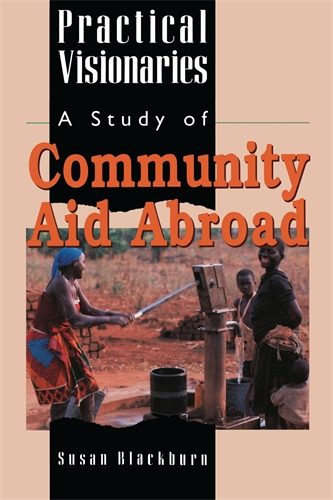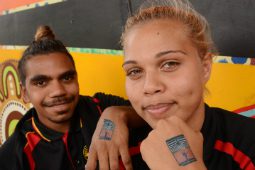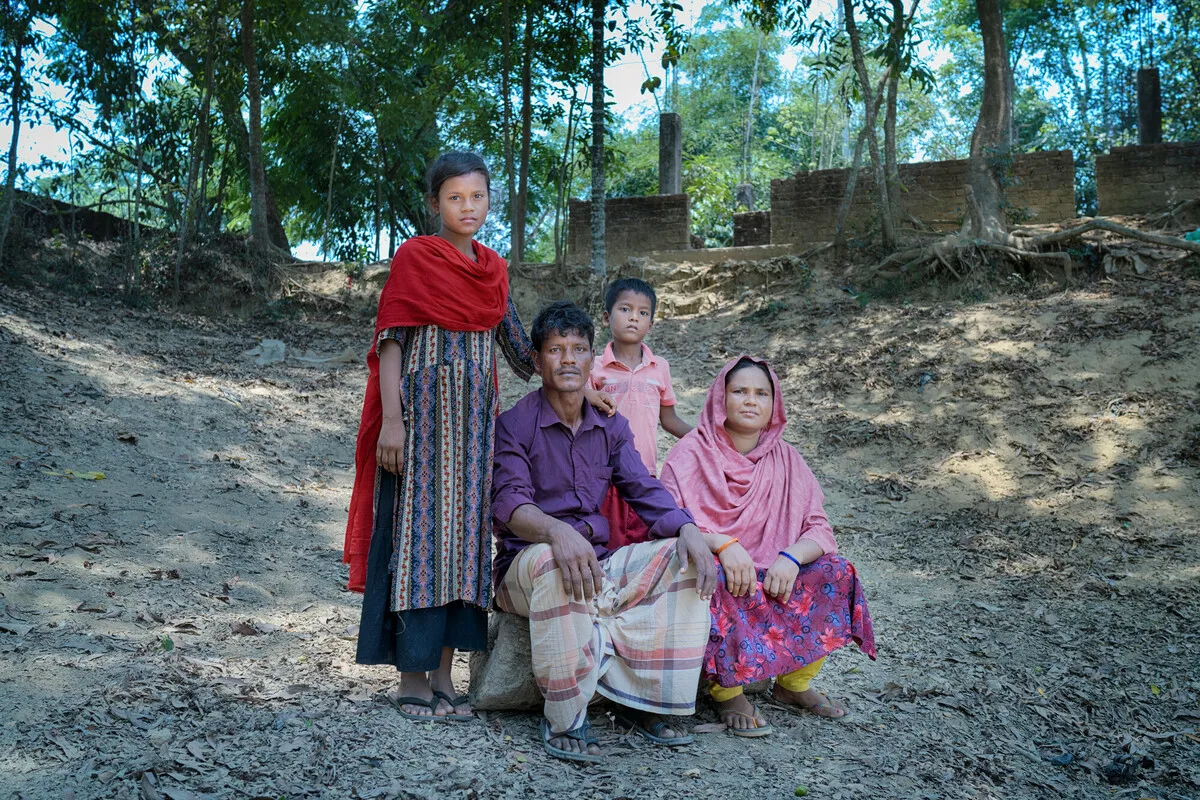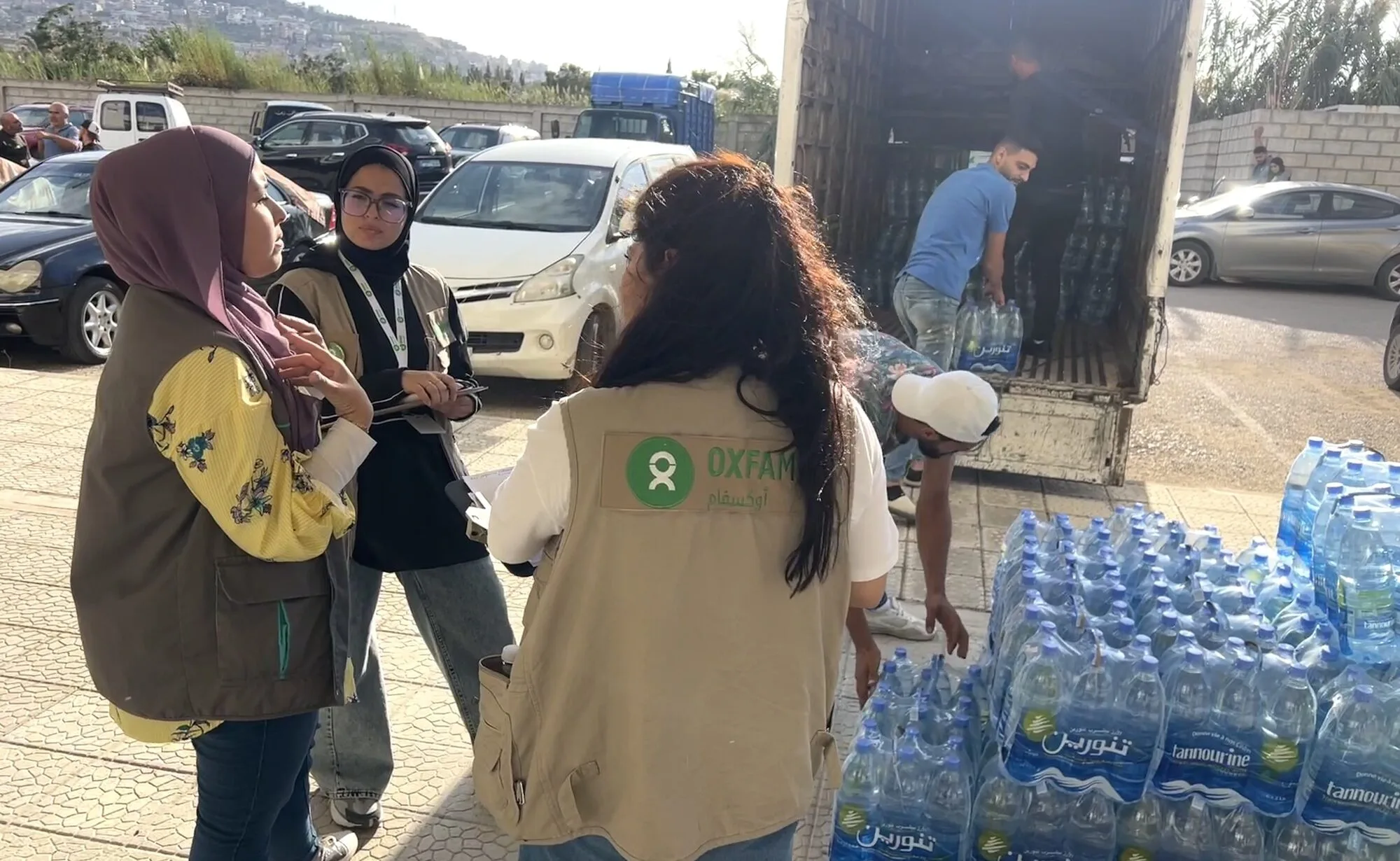In this edited extract from the book Practical Visionaries, Susan Blackburn explains how Oxfam’s predecessor, Community Aid Abroad (CAA), began working with Aboriginal communities in Australia more than 40 years ago. Blackburn reveals how this work forged bonds between Indigenous peoples in Australia and the developing world.
Whereas most desk officers in the projects section of CAA are communicating with project-holders overseas, the adoption by CAA of Aboriginal projects since 1975 has brought the problems of community development right to Australia’s own doorstep. It was intended that CAA would assist Aboriginal organisations to pursue their political objectives of seeking justice in Australian society. Thus CAA chose to support projects concerning land rights, cultural identity or survival, and those in fields like health, education and legal aid. Interim assistance from CAA has helped new initiatives to become established, while organisers work to pressure the government to take up its responsibility for such activities.
Apart from a strong lobby for Aboriginal projects within CAA itself, CAA was pressured by some of its overseas project partners to play a more prominent role in supporting the Aboriginal cause in Australia. The person who connected the interests of Indian and Australian tribal groups most forcefully was PA Madhavan, the chairman of the Indian organisation AWARE. On his visit to Australia, sponsored by CAA, Madhavan naturally took a special interest in the Aborigines and kept Indian tribals informed about the circumstances of their counterparts in Australia. He was in Australia in 1980 at the time of the Noonkanbah land dispute, which he was quick to report on his return to India. The Lambada tribals reacted with outrage to the story of the suppression of the Australian Aborigines’ struggle for their land, and Neil O’Sullivan, visiting India a little later, was taken to task. He reported the event in this way:
The great crowd of grim-faced, flag bearing Lambadas appeared suddenly as we turned the corner of this barren, rock-strewn region of Andhra Pradesh. Should of ‘Noonkanbah Zindabad’ broke out from amongst the three thousand odd tribal people and suddenly I knew that this was a confrontation. Their ultimatum was translated to me—I could not leave that spot until I had undertaken to do my utmost to work for the restoration of the rights of Aboriginal people at Noonkanbah.
The bamboo rods and black flags of the Lambadas relaxed a little as I described the role of CAA in the struggle at Noonkanbah and the help that we had given their brothers. Recognising the solemnity of the occasion, I made a carefully worded pledge to do as the Lambadas demanded. Total silence reigned until the translator finished his task. Then cheers and shouting broke out and once again the shout of ‘Noonkanbah Zindabad’ was taken up.
A later visit by a CAA study tour was greeted similarly by the Lambadas. It has been important for Australians thus to be reminded that people overseas are watching how the Aborigines are treated.

The first extensive visit to Aboriginal projects did not occur until 1983, by which time CAA had contributed about $300,000 to Aboriginal organisations. It is indeed hard to reach some of the Aboriginal communities that CAA has supported in northern Queensland and the Kimberley, but even more important has been the cultural distance involved. The gulf between middle-class white Australian desk officers and Aboriginal projects is enormous, and bridging it is emperilled by the historical weight of resentment by Aborigines of white racism, paternalism and interference. For many reasons then, communication between CAA and its Aboriginal project partners was poor and patchy.
The most important step forward in learning how to relate to Aboriginal organisations was made when CAA appointed its first Aboriginal Field Office, which it did in 1989. Since Aboriginal projects are dispersed around the country among a number of different communities, it has been decided to separate officers for the states with large Aboriginal populations, starting with Western Australia. These people acted like field representatives in CAA’s overseas programmes, being intermediaries between the local project holders and the desk officers in Melbourne.
The next step was to establish Aboriginal projects committees in the same states, to consist of voluntary Aboriginal advisers assisting in the selection and monitoring of Aboriginal projects. The first of these committees began work, again in Western Australia, in 1990. CAA has committed itself to ‘Aboriginalising’ its Aboriginal program, having learnt that this is the only way to avoid paternalistic and ineffectual relations with Aboriginal organisations and to encourage self-determination in the development of the Aboriginal community.
Rose Murray, CAA’s Aboriginal field officer in the Pilbara in Western Australia, points to the benefits of working with a non-government organisation: ‘It is very important that Aboriginal groups have access to non-government funding because of the many restrictions placed upon government funds. Another advantage is that CAA can respond quickly to need.’ Secondly, Australian Aborigines, through CAA, have been able to make contacts with groups of indigenous peoples in other countries. In 1988, a historic visit to India was made by Australian Aborigines, guides by one of CAA’s Indian field representatives. It was the first of a number of subsequent visits intended to show what Indian tribals have achieved by organising themselves.
For the Aborigines involved it was emotionally and intellectually challenging: they reported that the experience brought home to them the much greater absolute poverty in which many Indians, including tribals, lived; they were also stimulated by the much greater self-reliance which the Indian tribals displayed. A third advantage to Aboriginal organisations of the link with CAA is the opportunity offered to educate a sympathetic sector of Australian society about their concerns. CAA spreads information about Aboriginal causes through its literature, and organises campaigns alongside Aborigines, such as at the time of the Commonwealth Games in Brisbane.
It seems CAA has entered a new era in its Aboriginal projects, where its notions of development involving justice and empowerment have opened doors for it. In turn, the Aboriginal connection provides CAA with new challenges in development practice.



